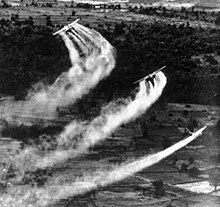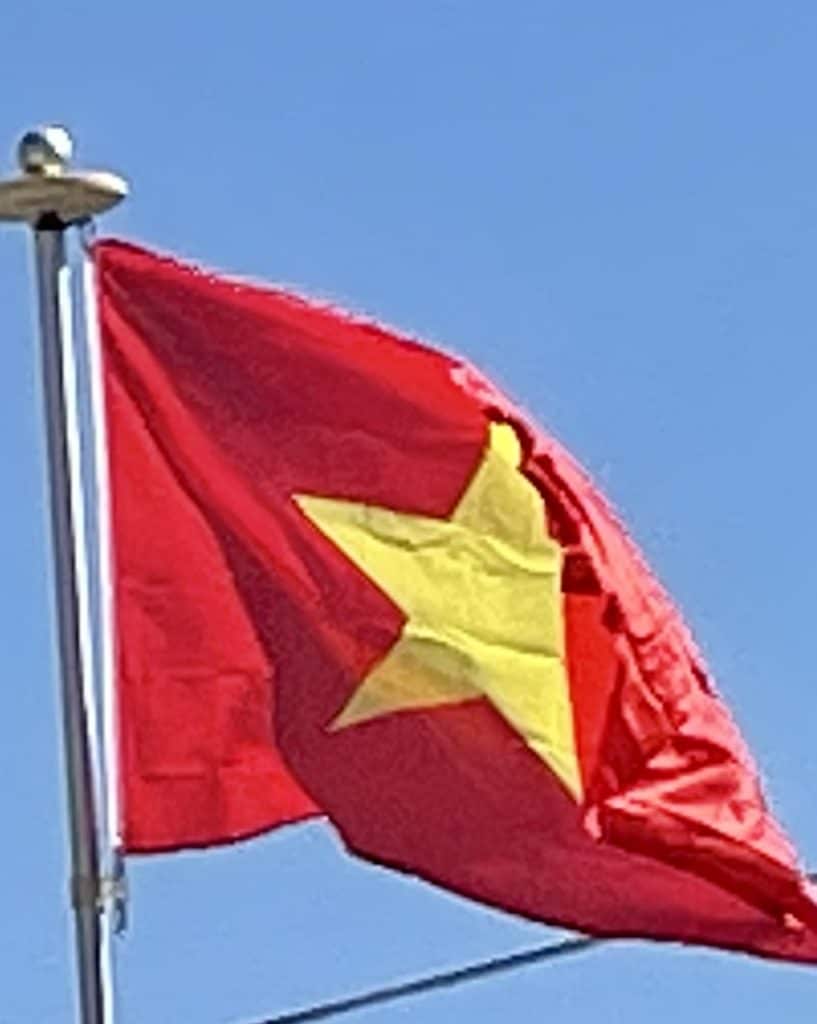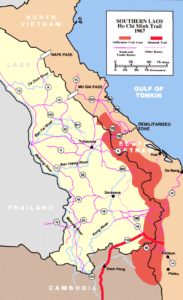

Vietnam
In 1963, Buddhist discontent with Diệm’s Catholic regime erupted into mass demonstrations, leading to a violent government crackdown. This led to the collapse of Diệm’s relationship with the United States, and ultimately to a 1963 coup in which he and Nhu were assassinated. The Diệm era was followed by more than a dozen successive military governments, before the pairing of Air Marshal Nguyễn Cao Kỳ and General Nguyễn Văn Thiệu took control in mid-1965. Thiệu gradually outmaneuvered Kỳ and cemented his grip on power in fraudulent elections in 1967 and 1971. During this political instability, the communists began to gain ground. To support South Vietnam’s struggle against the communist insurgency, the United States began increasing its contribution of military advisers, using the 1964 Gulf of Tonkin incident as a pretext for such intervention. US forces became involved in ground combat operations by 1965, and at their peak several years later, numbered more than 500,000. The US also engaged in a sustained aerial bombing campaign. Meanwhile, China and the Soviet Union provided North Vietnam with significant material aid and 15,000 combat advisers. Communist forces supplying the Việt Cộng carried supplies along the Hồ Chí Minh trail, which passed through Laos.

The communists attacked South Vietnamese targets during the 1968 Tết Offensive. The campaign failed militarily, but shocked the American establishment and turned US public opinion against the war. During the offensive, communist troops massacred over 3,000 civilians at Huế. Facing an increasing casualty count, rising domestic opposition to the war, and growing international condemnation, the US began withdrawing from ground combat roles in the early 1970s. This also entailed an unsuccessful effort to strengthen and stabilize South Vietnam. Following the Paris Peace Accords of 27 January 1973, all American combat troops were withdrawn by 29 March 1973. In December 1974, North Vietnam captured the province of Phước Long and started a full-scale offensive, culminating in the fall of Saigon on 30 April 1975. South Vietnam was ruled by a provisional government for almost eight years while under North Vietnamese military occupation.
Reunification and reforms
On 2 July 1976, North and South Vietnam were merged to form the Socialist Republic of Việt Nam. The war left Vietnam devastated, with the total death toll between 966,000 and 3.8 million. A 1974 US Senate subcommittee estimated nearly 1.4 million Vietnamese civilians were killed or wounded between 1965 and 1974—including 415,000 killed. In its aftermath, under Lê Duẩn‘s administration, there were no mass executions of South Vietnamese who had collaborated with the US or the defunct South Vietnamese government, confounding Western fears, but up to 300,000 South Vietnamese were sent to reeducation camps, where many endured torture, starvation, and disease while being forced to perform hard labor. The government embarked on a mass campaign of collectivization of farms and factories. In 1978, in response to the Khmer Rouge government of Cambodia ordering massacres of Vietnamese residents in the border villages in the districts of An Giang and Kiên Giang, the Vietnamese military invaded Cambodia and removed them from power after occupying Phnom Penh. The intervention was a success, resulting in the establishment of a new, pro-Vietnam socialist government, the People’s Republic of Kampuchea, which ruled until 1989. This, however, worsened relations with China, which had supported the Khmer Rouge. China later launched a brief incursion into northern Vietnam in 1979, causing Vietnam to rely even more heavily on Soviet economic and military aid, while mistrust of the Chinese government began to escalate.